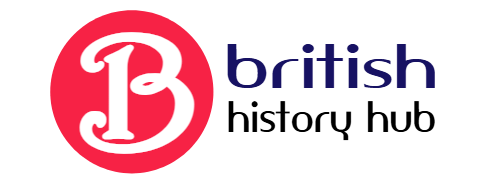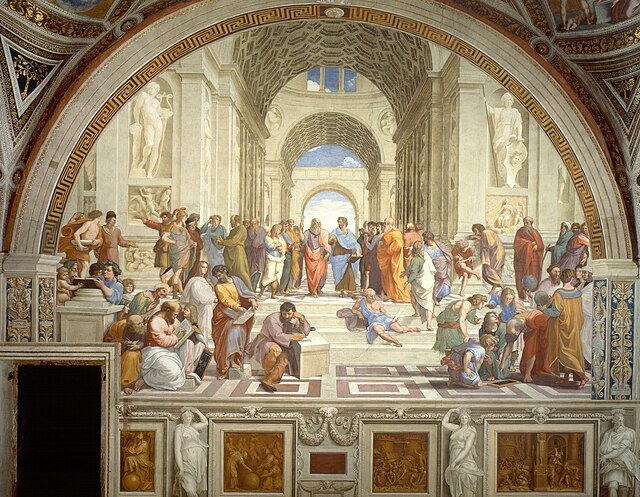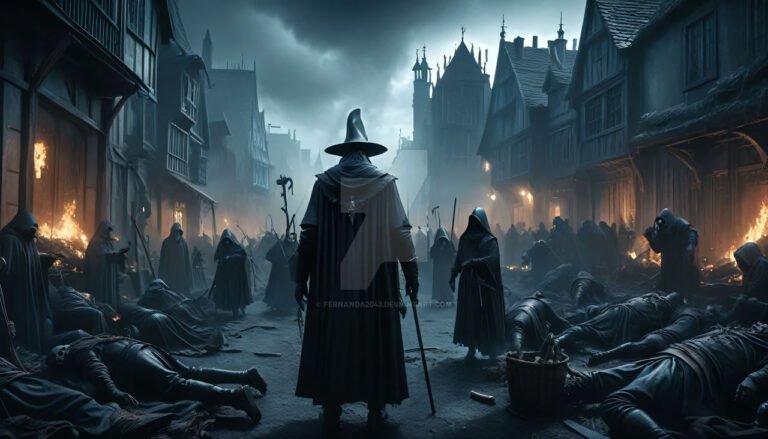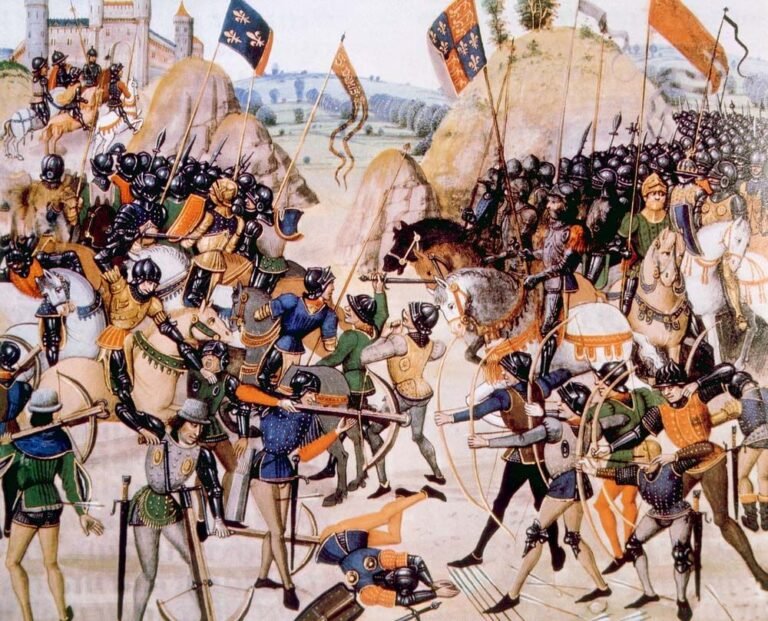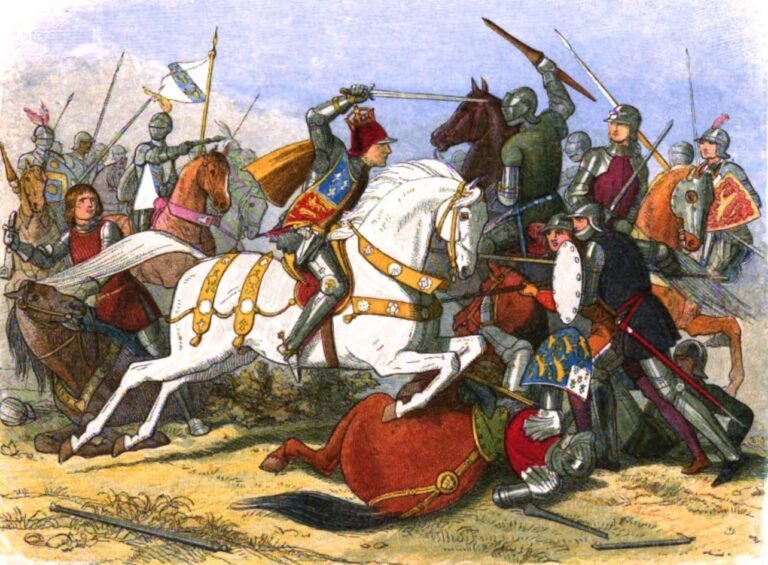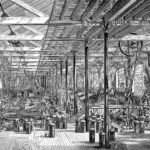The Renaissance was a time of great change and discovery. It marked the transition from the Middle Ages to modern times.
This period, spanning roughly from the 14th to the 17th century, saw a renewed interest in art, science, and literature. But what exactly sparked this cultural rebirth? The Renaissance began in Italy and spread across Europe, driven by a revived interest in classical antiquity.
People started valuing human potential and achievements. Artists like Leonardo da Vinci and Michelangelo created masterpieces that still captivate us today. Scientists like Galileo and Copernicus challenged old views, paving the way for modern science. Writers like Shakespeare explored the depths of human nature in their works. This era laid the foundation for many aspects of the world we know today. Understanding the Renaissance helps us appreciate the roots of our current culture and knowledge.
Origins Of The Renaissance
The Renaissance marked a vibrant period of cultural, artistic, and intellectual revival in Europe. Originating in Italy during the 14th century, it spread across the continent. This era bridged the Middle Ages and modern history. Let’s explore the origins of this remarkable period.
Historical Context
The Renaissance emerged after the Black Death, which had decimated Europe’s population. This led to economic and social changes. People began to question old ways and seek new ideas. Cities grew, and trade expanded. Wealthy merchants and families, like the Medici in Florence, supported artists and thinkers.
Influence Of Classical Antiquity
Classical antiquity played a crucial role in the Renaissance. Scholars rediscovered Greek and Roman texts. These works inspired new ways of thinking. Artists and architects studied classical art and buildings. They aimed to recreate the beauty and balance of ancient times. This revival of classical knowledge and techniques defined the Renaissance spirit.

Credit: moa.byu.edu
Artistic Innovations
The Renaissance was a period of great change. It brought new ideas and techniques in art. Artists experimented and created lasting works. Their innovations still inspire us today. Let’s explore how they transformed art during this vibrant era.
Techniques And Styles
Renaissance artists introduced new techniques and styles that changed art forever. One key technique was linear perspective. This method created the illusion of depth on a flat surface. Artists used vanishing points to make their paintings look three-dimensional.
Another important innovation was chiaroscuro. This technique used light and shadow to add drama and depth. Artists like Leonardo da Vinci mastered this technique. It made their subjects appear more lifelike.
Additionally, artists began using oil paints. These paints allowed for richer colors and finer details. They also dried more slowly, giving artists more time to work. This led to more complex and detailed artworks.
Renaissance artists also focused on realism. They studied anatomy to depict the human body accurately. This attention to detail made their art more relatable and true to life.
Famous Artists And Their Works
Many famous artists emerged during the Renaissance. Their works are still celebrated today. Here are a few of the most notable:
- Leonardo da Vinci – Known for the “Mona Lisa” and “The Last Supper”. He was a master of chiaroscuro and linear perspective.
- Michelangelo – Renowned for his sculptures “David” and “Pieta”. He also painted the Sistine Chapel ceiling.
- Raphael – Famous for “The School of Athens”. His work is admired for its clarity and harmony.
- Donatello – Known for his bronze statue “David”. He was a pioneer in using lifelike expressions in sculpture.
These artists pushed the boundaries of what was possible. They used new techniques and styles to create stunning works. Their legacies continue to influence art today.
Cultural Transformations
The Renaissance marked a period of profound cultural transformations. This era saw significant shifts in art, literature, and philosophy. People began to see the world in new ways. These changes influenced every aspect of society.
Humanism And Philosophy
Humanism emerged during the Renaissance. This philosophy focused on human potential and achievements. Thinkers valued individualism and the study of classical texts. They believed in the power of education to transform lives. Famous humanists like Erasmus and Petrarch championed these ideas. Their works inspired others to explore new ways of thinking.
Philosophy also flourished in this period. Scholars revisited ancient Greek and Roman philosophies. They applied these ideas to contemporary issues. This led to a deeper understanding of the human condition. Renaissance philosophers like Machiavelli and Montaigne wrote influential texts. Their writings still impact modern thought.
Impact On Literature
The Renaissance had a huge impact on literature. Writers began to use vernacular languages instead of Latin. This made literature accessible to a broader audience. Authors like Dante, Chaucer, and Shakespeare became prominent figures. They created works that are still celebrated today.
Literature during the Renaissance explored new themes. Human experiences, emotions, and individuality took center stage. This shift reflected the broader cultural transformations of the era. The printing press also played a vital role. It allowed for the mass production of books. This helped spread Renaissance ideas across Europe.
In summary, the Renaissance brought about significant cultural transformations. Humanism and philosophy reshaped thinking. Literature saw a revival with new themes and accessibility. These changes left a lasting legacy on Western culture.
Scientific Advancements
The Renaissance was a period of great change and discovery. Scientific advancements flourished during this era, leading to innovations that shaped the modern world. These breakthroughs laid the foundation for many of the scientific principles we understand today.
Key Discoveries
Many important discoveries were made during the Renaissance:
- Heliocentric Theory: Nicolaus Copernicus proposed that the Sun, not the Earth, was the center of the universe.
- Human Anatomy: Andreas Vesalius published “De Humani Corporis Fabrica,” a detailed study of human anatomy.
- Laws of Motion: Galileo Galilei’s experiments led to the understanding of the laws of motion and gravity.
- Telescope: The invention of the telescope allowed for greater exploration of the stars and planets.
Influential Scientists
The Renaissance era produced several influential scientists:
- Leonardo da Vinci
Leonardo was a polymath who made significant contributions to anatomy, optics, and engineering. His detailed sketches of the human body improved medical knowledge.
- Nicolaus Copernicus
Copernicus developed the heliocentric theory, challenging the geocentric model of the universe. This was a pivotal shift in astronomical science.
- Galileo Galilei
Galileo’s improvements to the telescope and his observations of celestial bodies supported the heliocentric theory. He also studied the laws of motion.
- Andreas Vesalius
Vesalius’s work on human anatomy corrected many misconceptions from ancient texts. His detailed drawings provided a better understanding of the human body.
| Scientist | Key Contribution |
|---|---|
| Leonardo da Vinci | Advances in anatomy, optics, and engineering |
| Nicolaus Copernicus | Heliocentric theory |
| Galileo Galilei | Improvements to the telescope, laws of motion |
| Andreas Vesalius | Human anatomy |
Political Changes
The Renaissance was a time of significant political changes in Europe. These changes shaped the modern world in many ways. This period saw the rise of powerful city-states and new forms of governance. These changes influenced politics, society, and culture across Europe.
Rise Of City-states
During the Renaissance, city-states became prominent in Italy. Cities like Florence, Venice, and Milan grew in power and influence. They were centers of trade, art, and learning. Each city-state had its own government, often run by wealthy merchant families. These families, like the Medici in Florence, became patrons of the arts.
The competition among city-states led to advancements in various fields. They invested in architecture, science, and philosophy. This fostered a culture of innovation and progress. City-states also formed alliances and rivalries, shaping the political landscape of the region.
Influence On Governance
The Renaissance brought new ideas about governance. Thinkers like Machiavelli wrote about political power and leadership. His book “The Prince” offered advice on ruling effectively. These ideas influenced leaders across Europe.
Governments during this period began to focus more on the welfare of their citizens. There was a shift towards more secular, human-centered politics. This was a change from the previous religious-based governance. New forms of government, including republics, emerged. This allowed for more participation from different social classes.
These political changes laid the groundwork for modern democracy. They encouraged the development of laws and institutions that protected individual rights. The Renaissance was truly a transformative period in European political history.
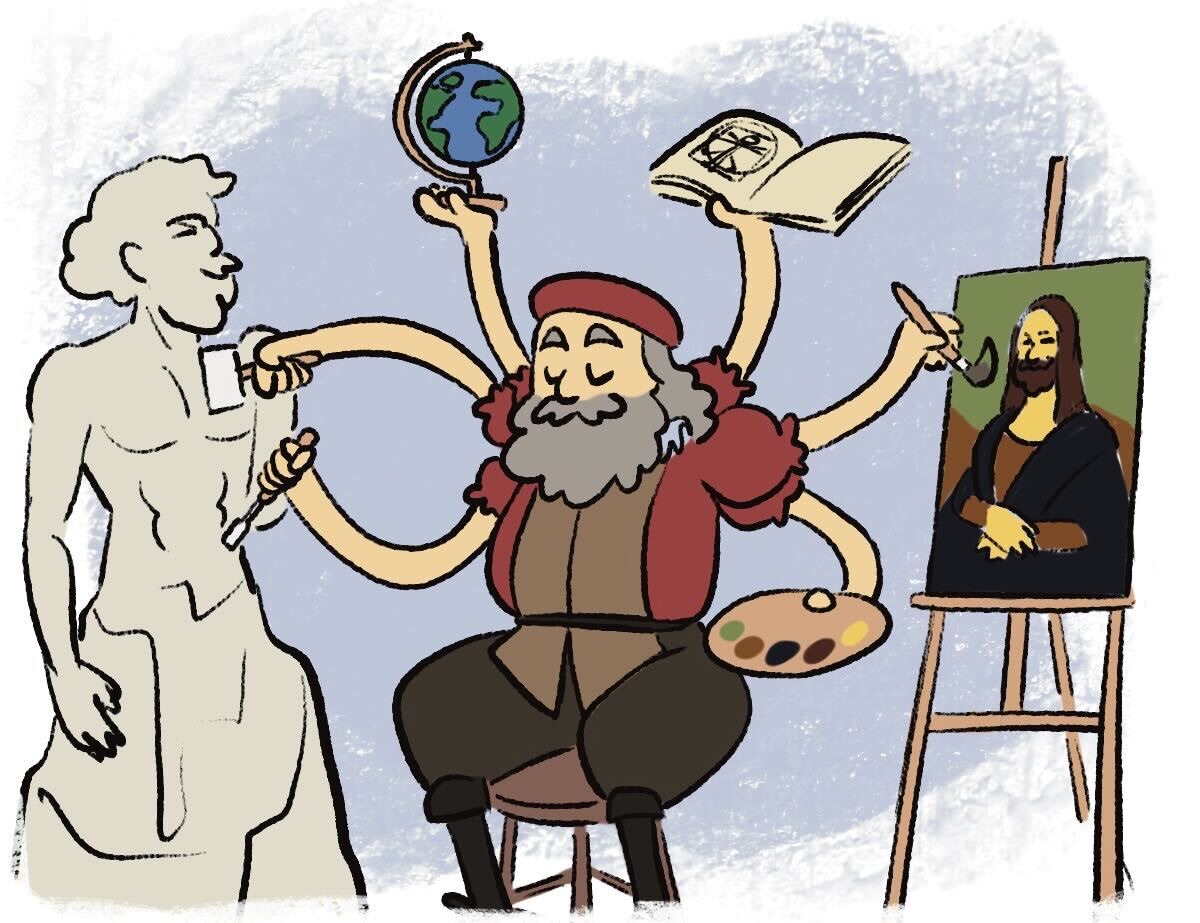
Credit: www.studlife.com
Economic Growth
The Renaissance was a time of great economic growth in Europe. This period saw significant advancements in trade, commerce, and the arts. The flourishing economy played a crucial role in the cultural and intellectual revival of the era.
Trade And Commerce
Trade expanded rapidly during the Renaissance. Merchants traveled far and wide, exchanging goods and ideas. Cities like Venice, Florence, and Genoa became major trading hubs. They connected Europe with Asia and the Middle East. This increased trade brought wealth and prosperity to many regions.
Commerce also thrived with the rise of banking. The Medici family in Florence, for instance, established a powerful banking system. Their influence spread across Europe. This financial growth enabled more investments in various sectors. The development of a stable currency system helped facilitate trade. It brought more efficiency and trust to commercial transactions.
Patronage Of The Arts
Wealthy patrons played a vital role in the Renaissance. They funded artists, architects, and scholars. This patronage led to the creation of many masterpieces. The Medici family was one of the most famous patrons. They supported artists like Leonardo da Vinci and Michelangelo.
Patronage extended beyond the arts. It also supported scientific research and education. Wealthy individuals and families established schools and universities. These institutions became centers of learning and innovation. This support helped fuel the intellectual growth of the Renaissance.
Renaissance In Northern Europe
The Renaissance in Northern Europe was a period of great cultural change. It followed the Italian Renaissance and brought a wave of new ideas. Art, science, and literature flourished in countries like Germany, France, and the Netherlands. This era saw a unique blend of local traditions and new influences from Italy.
Differences From Italy
While the Italian Renaissance focused on classical antiquity, the Northern Renaissance had its own character. Artists in Northern Europe used more realism and detail in their work. They often depicted everyday life and landscapes. Religious themes remained important, but they were portrayed differently.
Another key difference was the use of oil paint. This medium allowed for greater detail and vivid colors. Italian artists preferred fresco and tempera. In contrast, Northern artists like Jan van Eyck mastered oil painting techniques.
The printing press played a significant role in the Northern Renaissance. Invented by Johannes Gutenberg, it made books more accessible. Knowledge spread quickly, fueling education and scholarly pursuits.
Notable Figures And Contributions
| Figure | Country | Contribution |
|---|---|---|
| Albrecht Dürer | Germany | Renowned for his woodcuts and engravings. A master of detail. |
| Jan van Eyck | Netherlands | Perfected oil painting. Known for “The Arnolfini Portrait.” |
| Desiderius Erasmus | Netherlands | Humanist scholar. Wrote “In Praise of Folly.” |
| Hans Holbein the Younger | Germany | Famous for his portraits. Painted Henry VIII. |
| Hieronymus Bosch | Netherlands | Known for his imaginative and complex works. |
These figures left a lasting impact on art and culture. Their contributions continue to be studied and admired today.
Legacy Of The Renaissance
The Renaissance was a period of great change. It left a lasting mark on art, science, and culture. Its legacy continues to shape our world today.
Long-term Impact
The Renaissance brought significant advancements. These changes still impact us today. Let’s look at some key areas:
- Art and Architecture: Masterpieces like the Mona Lisa and St. Peter’s Basilica.
- Science: Pioneers like Galileo and Copernicus changed how we see the universe.
- Literature: Works by Shakespeare and Dante continue to be studied.
- Humanism: Focus on human potential and achievements.
Continuing Influence In Modern Times
The Renaissance still influences modern society. Its principles are evident in various fields:
| Field | Impact |
|---|---|
| Education | Humanistic education models are used worldwide. |
| Art | Renaissance techniques inspire contemporary artists. |
| Science | Scientific methods developed during the Renaissance are still in use. |
The Renaissance also brought about a renewed interest in knowledge. This curiosity remains strong today. People continue to seek understanding and innovation.
FAQs
What Was The Renaissance?
The Renaissance was a cultural movement from the 14th to 17th century. It began in Italy and spread across Europe. It marked a revival of art, literature, and learning.
Why Is The Renaissance Important?
The Renaissance is important because it revived classical learning and wisdom. It introduced new ways of thinking and artistic techniques. It laid the foundation for modern science and art.
Who Were Key Figures Of The Renaissance?
Key figures include Leonardo da Vinci, Michelangelo, and Raphael. They were renowned for their contributions to art and science. Their work continues to influence modern culture.
How Did The Renaissance Start?
The Renaissance started in Italy due to increased trade and wealth. The rediscovery of classical texts also played a role. Wealthy patrons funded artists and scholars.
Conclusion
The Renaissance changed the world in many ways. It sparked creativity and learning. Art, science, and literature flourished during this time. The period left a lasting impact on history. People still admire Renaissance achievements today. Its influence is evident in modern culture.
Exploring this era offers valuable insights. It reminds us of human potential and creativity. The Renaissance truly marked a pivotal moment. Its legacy continues to inspire generations.
